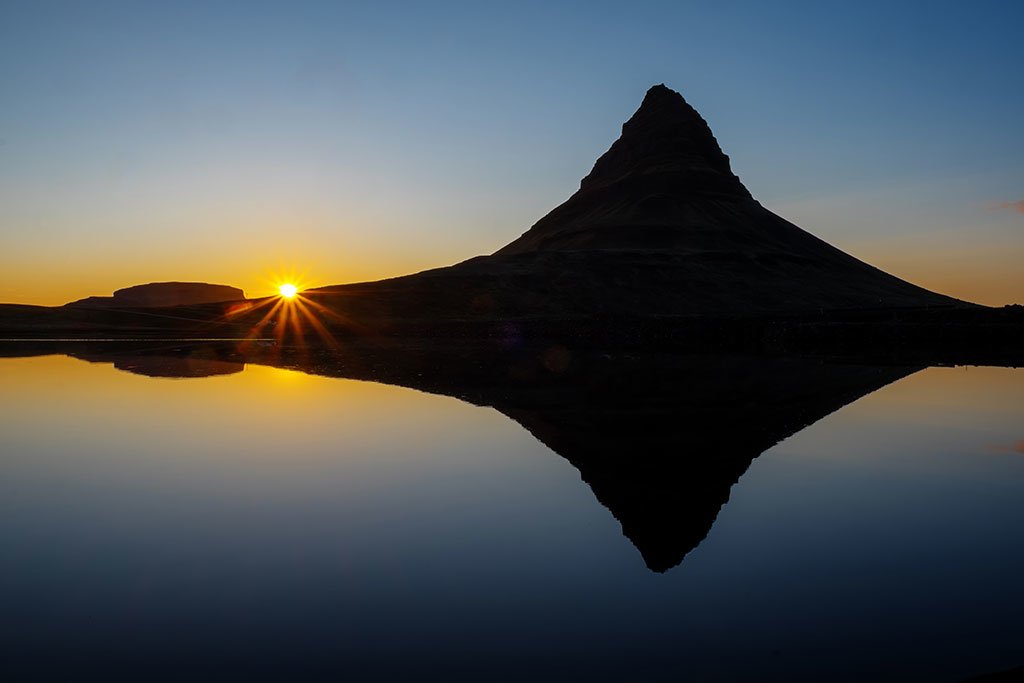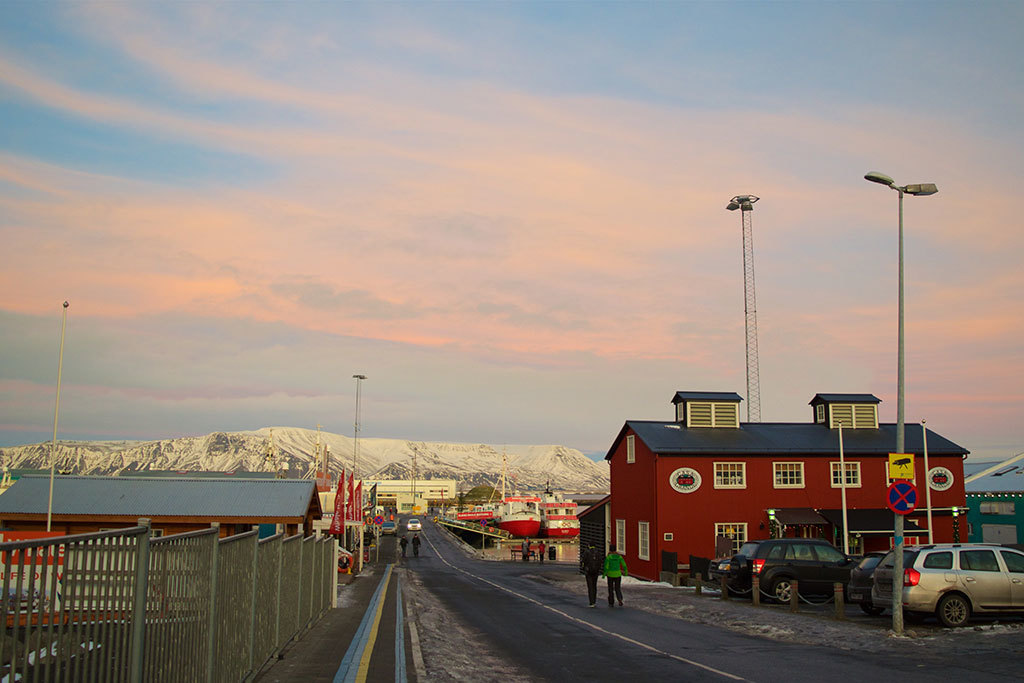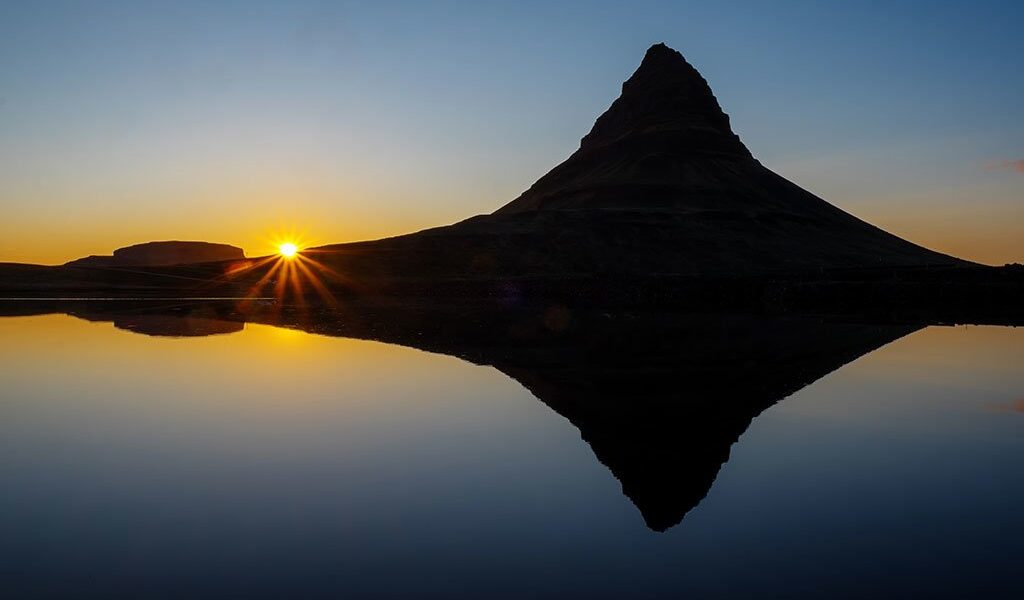
Given Iceland’s rapidly increasing popularity as a travel destination, the question “When is the best time of year to go to Iceland?” has become as much about considering the right weather conditions as it is about avoiding the crowds and finding available accommodation at reasonable rates. Depending on how you weigh these factors and what you would like to do in Iceland, we’ll help you decide which season is right for you.
## Experiencing Iceland: A Seasonal Guide to Planning Your Adventure
Embarking on a journey to Iceland is an exciting prospect, filled with the promise of breathtaking landscapes and unique cultural experiences. To truly make the most of your trip to Iceland, careful planning is essential. This includes considering the seasonal variations – the weather, the amount of daylight, and the anticipated number of fellow travelers who will also be exploring the wonders of Iceland. These factors will significantly impact your overall experience.
Nestled just south of the Arctic Circle, Iceland undergoes a profound transformation with each passing season. Each season possesses its own distinct charm and character, offering a unique perspective on this incredible island nation. Therefore, the ideal time to visit Iceland is inherently subjective, depending on your priorities and preferences.
The tourism industry in Iceland has experienced remarkable growth in recent years. The annual number of visitors has surged from just under 500,000 in 2010 to well over 1.5 million in 2016. This exponential increase means that visiting popular destinations like Geysir during the peak tourist season can feel akin to navigating the bustling crowds of Times Square. While it might not be quite as densely packed, the sheer volume of visitors can detract from the experience of immersing yourself in the natural beauty of the landscape.
Therefore, meticulous planning is paramount. Even subtle adjustments to your itinerary can make a world of difference. For instance, consider scheduling your tour of the Golden Circle during the early morning hours or late in the evening. This strategy is particularly effective during Iceland’s long summer days, allowing you to circumvent the throngs of tourists and appreciate these natural wonders in a more tranquil and intimate setting. Furthermore, venturing into more remote regions, such as the highlands or the West Fjords, offers an escape from the crowds and a glimpse into a more authentic side of Iceland, regardless of the time of year.
### Reykjavík in January: A Winter Wonderland
[Image of Reykjavík in January]
Reykjavík, the vibrant capital city, dons a cloak of snow in January, creating a picturesque winter wonderland. The city’s colorful buildings stand in stark contrast to the white landscape, offering stunning photographic opportunities.
### Hraunfossar Falls in February: A Frozen Spectacle
[Image of Hraunfossar falls in February]
The Hraunfossar falls in February transform into a mesmerizing display of ice and snow. The cascading waterfalls freeze in places, creating intricate formations that glisten in the winter light.
### Skogafoss Falls in March: The Awakening of Spring
[Image of Skogafoss waterfall in March]
As March arrives, Skogafoss falls begins to thaw, showcasing the power and beauty of nature. The surrounding landscape gradually awakens from its winter slumber, hinting at the arrival of spring.
### Northern Lights in December: A Celestial Dance
[Image of northern lights]
December offers prime viewing opportunities for the elusive Northern Lights. The dark winter skies provide the perfect backdrop for this celestial dance of colors.
### Experiencing Iceland in Winter
The winter months in Iceland, spanning from December to February, are characterized by limited daylight hours, frequent heavy snowfall, and temperatures hovering around 32°F/0°C. However, this season presents the most favorable conditions for witnessing the awe-inspiring Northern Lights. On the other hand, winter may not be the best time for embarking on extensive road trips, as driving conditions can be challenging due to snow and ice. It is often advisable to stick to day trips, especially if you are not accustomed to navigating winter weather conditions.
**Daylight:** The length of daylight hours in Iceland during winter varies considerably depending on the specific time of your visit. Reykjavík experiences as little as 4 hours of daylight at the end of December, increasing to 10 hours by the end of February. If you are feeling particularly adventurous and venture to the north of Iceland during midwinter, you may encounter as little as 2 hours of daylight. In certain towns, the sun remains hidden behind the mountains for several months, creating a unique and somewhat surreal atmosphere.
**Crowds:** Winter generally sees fewer tourists than the other three seasons. However, it’s important to note that winter tourism has been on the rise in recent years. The months of December, January, and February typically see approximately one-third the number of visitors compared to the peak tourist season during the summer months.
### The Arrival of Spring in Iceland
Springtime in Iceland, encompassing the months of March through May, signals a gradual warming of temperatures, the melting of winter snow, and the resurgence of natural wonders with the lengthening daylight hours. Icelanders celebrate this increase in daylight with various spring festivals. The tourist crowds remain relatively light during this period, making spring an ideal time to visit the more accessible natural highlights. However, it’s important to note that many hiking trails in the highlands may still be inaccessible due to lingering snow and ice.
**Daylight:** If you visit in early spring, specifically in March, the nights will still be longer than the days. However, this dynamic changes rapidly towards the end of March, with daylight hours increasing dramatically to exceed 20 hours by late May.
**Crowds:** Spring tends to be slightly more crowded than winter, with the number of travelers gradually increasing towards the end of May.
### Embracing the Summer Season in Iceland
During the summer months of June, July, and August, Iceland enjoys long daylight hours, with average temperatures reaching a comfortable 53°F/12°C. This season also marks the opening of Iceland’s highlands, inviting visitors to embark on active adventures. Summer is undoubtedly Iceland’s busiest tourist season, and a popular time to experience a Midnight Sun tour. Most of Iceland’s festivals take place during the summer, with each town hosting its own unique event. Hiking trails in the highlands become accessible, transforming Iceland into a trekker’s paradise.
**Daylight:** Summer in Iceland offers exceptionally long days, making a summer trip a truly special experience. During midsummer, at the end of June, the sun does not set until midnight and rises again just a few short hours later, around 3 am. If you travel to the north of Iceland, you will experience 24 hours of daylight. As summer progresses, the days gradually shorten to approximately 15 hours of sunlight by the end of August.
**Crowds:** Summer is the most crowded season in Iceland. Hotels tend to be fully booked, and popular sights near Reykjavík and along the South Coast can become extremely crowded.
### Autumn’s Embrace in Iceland
The autumn months, from September to November, bring unpredictable weather patterns and occasional heavy storms to Iceland. The days grow shorter, and the Northern Lights begin to make their initial appearances. One of the key attractions of visiting Iceland in autumn is the stunning display of autumn colors, which enhance the beauty of the scenery, especially when bathed in the right light.
**Daylight:** Daylight hours decrease dramatically during the fall, from 15 hours in early September to a mere 5 hours by the end of November. If maximizing daylight for longer day trips is a priority, consider visiting in early fall.
**Crowds:** Visitor numbers decline rapidly as fall sets in. September is often considered an excellent month to visit, as the days are still relatively long, and the majority of the summer crowds have departed.
### Daylight Chart Reykjavík
[Image of Daylight chart Reykjavik]
The daylight chart for Reykjavík visually depicts the changing daylight hours throughout the year, providing a valuable resource for planning your trip.
## Events and Festivals in Iceland: A Cultural Immersion
Iceland boasts a rich tapestry of cultural events and festivals throughout the year. Consider aligning your trip with one of these celebrations to enrich your experience.
### January 6th – Tþrettándinn
To commemorate the official conclusion of the Christmas festivities and the dawn of a new year, Icelanders gather to build bonfires, launch fireworks, and sing traditional songs in public squares. Children sculpt mythical Icelandic creatures from snow and ice. This time of year often coincides with colorful displays of the Northern Lights and freezing temperatures.
### January 19th – 25th – Tþorrablót
This annual mid-winter Viking festival has been a cherished tradition across Iceland for over a millennium. Communities unite, and visitors are warmly welcomed to participate in the festivities. Traditional Viking foods, for those with adventurous palates, are often shared around massive public bonfires. These culinary offerings may include pickled ram’s testicles, *hakarl* (putrefied shark), and boiled sheep’s head. Traditional Icelandic songs are sung, providing a glimpse into the unique culture of this winter wonderland. The Tþorrablót festival provides a fascinating insight into the unique culture of this captivating island nation.
### February – Ash Wednesday (date varies) – Öskudagur
Similar to Halloween celebrations in many parts of the world, the Ash Wednesday Festival sees Icelandic children dressing up in traditional Icelandic costumes and parading through towns and villages, singing songs. In return, residents reward them with local cream puffs known as *bollur*.
### March 1st – Beer Day
To commemorate the legalization of alcohol above 2.2% in 1989, Icelanders dedicate the entire day to celebrating with friends and family in local pubs and taverns. A popular choice among locals is Brennivin, an herbal schnapps liquor with a 40% alcohol volume.
### April – Easter Week – End of Winter Celebrations
Icelanders enjoy a five-day holiday, from Holy Thursday to Easter Monday, spending quality time with their families. Locals extend warm hospitality to visitors, inviting them into their homes to share smoked lamb and large chocolate eggs. In Ísafjörður, located in the west of the island, the “I Never Went South” rock music festival rejuvenates the town after its winter lull.
### Mid-May – Reykjavík Arts Festival
For 16 days in mid-May, the capital city of Reykjavík bursts to life with a vibrant display of art, theater, music, and crafts. World-renowned singers share the stage with their lesser-known Icelandic counterparts, offering free concerts in Reykjavík’s parks and open spaces.
### June – 1st Weekend of June – Festival of the Sea
Fishermen engage in rowing and strongman competitions around Reykjavík, and freshly caught seafood and locally brewed beers are sold at discounted prices to honor those who earn their living from the sea.
### Mid-June – Viking Festival
For 10 days in mid-June, the western town of Hafnarfjörður steps back in time, with streets adorned with sheepskin tapestries, Viking hordes roaming in search of willing participants, and staged battles with British and German Christian competitors. Nowhere else in the world celebrates the Vikings quite like this.
### June 17th – Independence Day
Iceland’s Independence Day is marked by grand celebrations across the country, commemorating its secession from Danish rule in 1944. A parade marches along the main streets of cities and towns, followed by musical performances and local festivities.
### First Weekend of August – Verslunarmannahelgi
Despite its lengthy name, the core theme of this event is simple: to revel in celebration. Icelanders flock to the Westman Islands to camp out for the entire weekend, enjoying live concerts, indulging in copious amounts of alcohol, and dancing around a campfire.
### End of September – Réttir
Literally translated as “round-up,” Réttir signifies the time of year when thousands of sheep and wild horses are gathered for the winter. It’s a truly awe-inspiring sight to witness.
### Mid-October – Iceland Airwaves
Widely regarded as Iceland’s most renowned music concert, this annual event draws crowds from across the globe, eager to experience Iceland’s finest indie and alternative bands.
### December – Christmas
During the Christmas season, Iceland experiences only approximately four hours of daylight. The streets of towns and villages are illuminated by candlelight and the enchanting glow of the Northern Lights. For the 13 nights leading up to Christmas, children place a shoe outside their door each night, waking up to discover small gifts left by the “yuletide lads,” Iceland’s unique rendition of Santa Claus.
## Seasonal Travel Patterns & The Growth of Tourism in Iceland
Since 2010, tourism in Iceland has experienced a period of dramatic expansion, placing a strain on available accommodations and creating issues with overcrowding in some of the most popular tourist destinations. These include the Golden Circle Area and the South Coast. What this means for the traveler is that careful planning is crucial, unless you are comfortable enjoying Iceland’s key attractions alongside hundreds of other people.
Here are some strategies to help avoid the crowds:
* If possible, avoid the busiest travel months of June, July, and August. As demonstrated in the chart below, summer months can be up to three times more crowded than the quieter winter months.
* If your scheduling limitations restrict travel to the summer months, and you are interested in viewing popular areas, consider planning your visits for the early morning or late evenings.
* Avoid crowded areas completely by taking a domestic flight or driving to more remote locations such as the West Fjords, the Troll Peninsula in the north, or Egilsstadir in eastern Iceland.
### Tourism Numbers to Iceland by Month
[Image of Tourism numbers to Iceland by Month]
The traveler arrival chart details visitor numbers by month.
## Conclusion: Finding the Best Time to Visit Iceland
In conclusion, the optimal time to visit Iceland is dependent on individual preferences and objectives. Choosing the right time hinges on what experiences you want to prioritize, your tolerance for crowds, and whether you are willing to pay higher prices during peak season.
If you hope to see the Northern Lights, the winter months are the best time to visit. You will need to brave shorter days and cold weather, but it will maximize your chances of witnessing this natural wonder.
If the goal is to explore Iceland’s vast nature and outdoors, the best time to visit is in the late spring to early fall. The summer months typically feature good weather and long days, but they also attract a high number of tourists. Given these conditions, consider late August to early September. The weather still tends to be mild, days are still long, and crowds have thinned out.

B-1184

